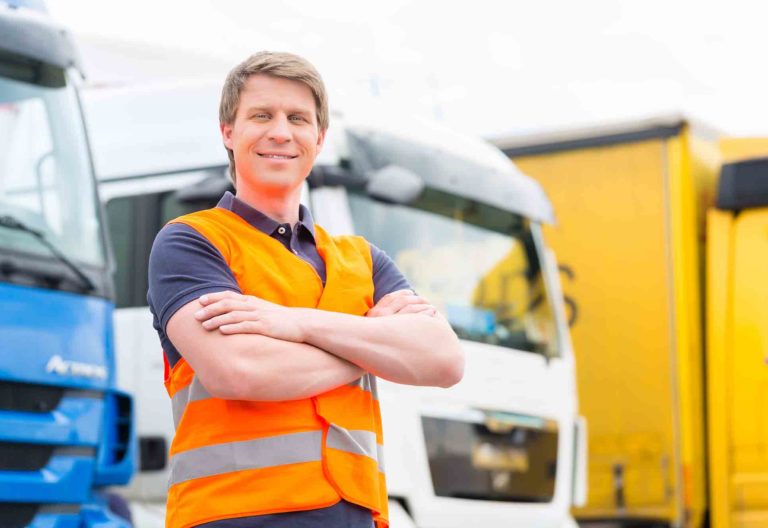In an era of growing environmental concerns, achieving sustainability goals has become a priority for many businesses, including those with fleets of vehicles. Fleet vehicle sustainability goals involve reducing environmental impact, optimising resource utilization, and minimizing carbon emissions. Leveraging data plays a pivotal role in successfully attaining these goals.
This article explores how businesses can utilize data to achieve fleet vehicle sustainability objectives and outlines strategies for optimizing fuel efficiency, managing vehicle maintenance and emissions, embracing technology and telematics, collaborating with suppliers and partners, and effectively monitoring and reporting progress.
Understanding Fleet Vehicle Sustainability Goals
Definition and Importance of Sustainability Goals
Fleet vehicle sustainability goals encompass the commitment to reduce the ecological footprint of a fleet’s operations. These goals involve adopting practices that promote fuel efficiency, minimize emissions, and prioritize environmental responsibility. Achieving sustainability goals is not only essential for reducing the environmental impact but also contributes to cost savings, enhances brand reputation, and aligns with corporate social responsibility initiatives.
Benefits of Achieving Sustainability Goals
The benefits of achieving fleet vehicle sustainability goals are multi-faceted. Firstly, it helps businesses contribute to environmental conservation by reducing carbon emissions, air pollution, and reliance on fossil fuels. Secondly, it drives cost savings through improved fuel efficiency, reduced maintenance expenses, and potential tax incentives or rebates associated with sustainable practices. Additionally, achieving sustainability goals can enhance brand image, attract environmentally conscious customers, and create a competitive edge in the market.
Leveraging Data for Fleet Sustainability
Collecting and Analyzing Fleet Data
“To achieve fleet sustainability goals, businesses need to gather and analyze relevant fleet data. “

This includes information such as fuel consumption, vehicle maintenance records, driver behaviour, route efficiency, and emissions data. Collecting accurate and comprehensive data enables fleet managers to identify areas for improvement, track progress, and make informed decisions to optimize sustainability efforts, implementing a robust fleet management system or utilizing telematics solutions can facilitate data collection and analysis, providing valuable insights for sustainable decision-making.
Identifying Key Performance Indicators (KPIs)
Once the data is collected, it is crucial to identify key performance indicators (KPIs) that align with fleet sustainability goals. These KPIs can include metrics such as fuel efficiency, carbon emissions per mile, vehicle utilization, maintenance costs, and driver behaviour. By tracking and monitoring these KPIs, businesses can measure their progress, identify areas of improvement, and set specific targets for achieving sustainability goals.
Setting Realistic and Measurable Goals
To effectively achieve fleet vehicle sustainability, businesses need to set realistic and measurable goals. These goals should be specific, achievable, and time-bound. For example, a business might aim to reduce fuel consumption by a certain percentage within a specified timeframe or decrease emissions by implementing alternative fuel technologies. Setting clear goals provides direction and motivation for all stakeholders involved in sustainability initiatives.
Optimising Fuel Efficiency
Monitoring and Reducing Fuel Consumption
Fuel consumption is a significant contributor to a fleet’s carbon footprint and operating costs. To optimize fuel efficiency, businesses can utilize data to monitor fuel consumption patterns and identify areas for improvement. This can involve tracking fuel usage on a per-vehicle basis, analyzing driver behaviour, and identifying fuel-wasting practices such as excessive idling or aggressive acceleration. By addressing these factors through driver training programs, implementing fuel-saving techniques, and utilizing real-time feedback systems, businesses can significantly reduce fuel consumption and emissions.
Implementing Driver Training and Behavior Monitoring
Driver behaviour plays a critical role in fuel efficiency and overall fleet sustainability. Businesses can leverage data to identify drivers with suboptimal fuel efficiency and provide targeted training programs to improve their driving habits. This can include techniques such as maintaining consistent speeds, avoiding unnecessary idling and optimizing route planning. Additionally, using telematics systems to monitor driver behaviour in real-time allows fleet managers to address any issues promptly and provide constructive feedback to drivers.
Exploring Alternative Fuel Options
Another way to achieve fleet sustainability goals is by exploring alternative fuel options. Electric vehicles (EVs) and hybrid vehicles have gained popularity in recent years due to their lower emissions and reduced reliance on fossil fuels. By analyzing the feasibility and benefits of incorporating EVs or hybrid vehicles into the fleet, businesses can make informed decisions about transitioning to more sustainable fuel options. Data analysis can help evaluate factors such as vehicle range, charging infrastructure availability, and potential cost savings associated with alternative fuel adoption.
Managing Vehicle Maintenance and Emissions
Implementing Preventive Maintenance Programs
Proper vehicle maintenance not only ensures fleet safety but also contributes to sustainability. Businesses can utilize data to implement preventive maintenance programs that optimize vehicle performance, reduce emissions, and extend the lifespan of vehicles. By tracking maintenance records, scheduling routine inspections, and addressing maintenance issues promptly, businesses can minimize unexpected breakdowns, improve fuel efficiency, and reduce the environmental impact caused by inefficient vehicles.
Tracking and Reducing Vehicle Emissions
Emissions monitoring and reduction strategies are integral to achieving fleet sustainability goals. Utilizing data from vehicle tracking systems or onboard diagnostics, businesses can track emissions levels and identify opportunities for improvement. This can involve analyzing emissions data on a per-vehicle basis, implementing regular emissions testing, and exploring emission-reducing technologies such as exhaust after-treatment systems. By actively monitoring and reducing vehicle emissions, businesses can contribute to a cleaner environment and comply with emission standards and regulations.
Embracing Electric and Hybrid Vehicles
Integrating electric and hybrid vehicles into the fleet is an effective way to reduce emissions and achieve long-term sustainability. Data analysis can help assess the feasibility of incorporating electric or hybrid vehicles based on factors such as vehicle range, charging infrastructure availability, and operational requirements. By evaluating the total cost of ownership, including acquisition costs, maintenance expenses, and potential incentives, businesses can make informed decisions about transitioning to electric or hybrid vehicles. Additionally, data analysis can aid in optimizing vehicle deployment, identifying the most suitable routes for electric vehicles, and ensuring efficient charging schedules.
Embracing Technology and Telematics
Integrating Telematics Solutions
Technology and telematics solutions play a pivotal role in achieving fleet sustainability goals. Telematics systems provide real-time data on various aspects of fleet operations, including vehicle location, fuel consumption, driver behaviour, and maintenance needs. By integrating telematics solutions into the fleet, businesses can gain valuable insights into fuel efficiency, emissions, and overall fleet performance. This data can be used to identify areas of improvement, implement targeted strategies, and track progress towards sustainability goals.
Utilising Predictive Analytics
Predictive analytics, enabled by advanced data analysis techniques, can enhance fleet sustainability efforts. By leveraging historical data, businesses can develop predictive models to anticipate fuel consumption, maintenance needs, and potential emissions levels. This allows proactive planning and preventive measures to minimize environmental impact and optimize resource utilization. Predictive analytics also facilitates route optimization, ensuring the most fuel-efficient and environmentally friendly paths are chosen.
Optimizing Routing and Dispatching
Efficient routing and dispatching have a direct impact on fuel consumption and emissions. Leveraging data from telematics systems and real-time traffic information, businesses can optimize route planning to minimize distance travelled, avoid traffic congestion, and reduce idle time. Implementing intelligent dispatching systems that consider factors such as vehicle capacity, proximity to destinations, and real-time data can further enhance operational efficiency and sustainability.
Collaborating with Suppliers and Partners
Engaging with Sustainable Suppliers
Collaborating with sustainable suppliers and partners is an effective strategy to support fleet sustainability goals. Businesses can assess the environmental practices and sustainability initiatives of their suppliers and prioritize working with those who align with their sustainability objectives. This can include sourcing eco-friendly vehicle components, utilizing renewable or low-carbon energy sources, and promoting responsible waste management practices throughout the supply chain.
Encouraging Eco-friendly Partner Collaborations
In addition to suppliers, partnering with other businesses and organizations that share a commitment to sustainability can further enhance fleet vehicle sustainability. Collaborative efforts can involve sharing best practices, knowledge, and resources to drive innovation and continuous improvement. By fostering eco-friendly partnerships, businesses can collectively contribute to reducing carbon emissions, exploring sustainable technologies, and advancing sustainable transportation solutions.
Monitoring and Reporting Progress
Regular Performance Evaluation
To ensure the effectiveness of sustainability initiatives, it is crucial to regularly evaluate performance and progress. By continuously monitoring key performance indicators (KPIs) and comparing them against set targets, businesses can identify areas for improvement and take corrective actions. Regular performance evaluations also provide opportunities for recognizing successes, acknowledging employee contributions, and adjusting strategies as needed.
Transparency and Reporting
Transparency and reporting are essential components of a comprehensive fleet sustainability strategy. Businesses can communicate their sustainability efforts, progress, and achievements to internal and external stakeholders through sustainability reports, corporate social responsibility initiatives, and public disclosures. Transparent reporting builds trust, enhances brand reputation, and encourages accountability while inspiring others to adopt sustainable practices.
Overcoming Challenges and Roadblocks
Employee Engagement and Training
One of the key challenges in achieving fleet vehicle sustainability goals is employee engagement and training. It is important to involve employees in the sustainability journey, raise awareness about the importance of sustainability, and provide training on eco-driving techniques and sustainable fleet practices. Engaging employees through communication, incentives, and recognition fosters a culture of sustainability and encourages active participation in achieving sustainability goals.
Infrastructure and Investment
Infrastructure limitations and financial constraints can pose challenges to fleet sustainability initiatives. Businesses need to assess and invest in the necessary infrastructure to support sustainable practices, such as installing charging stations for electric vehicles or upgrading maintenance facilities to accommodate alternative fuel technologies. While upfront investments may be required, the long-term cost savings and environmental benefits justify the investment in creating a sustainable fleet infrastructure.
Regulatory and Policy Considerations
Navigating regulatory and policy landscapes is crucial for successful fleet sustainability. Businesses must stay informed about relevant regulations, incentives, and government initiatives that support sustainable transportation. This includes understanding emission standards, tax incentives for eco-friendly vehicles, and grants or funding opportunities for sustainable fleet initiatives. Compliance with regulations and actively participating in policy discussions can positively impact fleet sustainability efforts.
Conclusion
Achieving fleet vehicle sustainability goals through data-driven strategies is essential for businesses in Australia. By leveraging data to optimize fuel efficiency, manage vehicle maintenance and emissions, embrace technology and telematics, collaborate with suppliers and partners, and effectively monitor and report progress, businesses can make significant strides towards sustainability. The benefits of achieving fleet sustainability goals extend beyond environmental conservation, including cost savings, improved brand reputation, and enhanced competitiveness in the market. By prioritizing sustainability and utilizing data as a powerful tool, businesses can create a greener, more efficient, and future-ready fleet.




